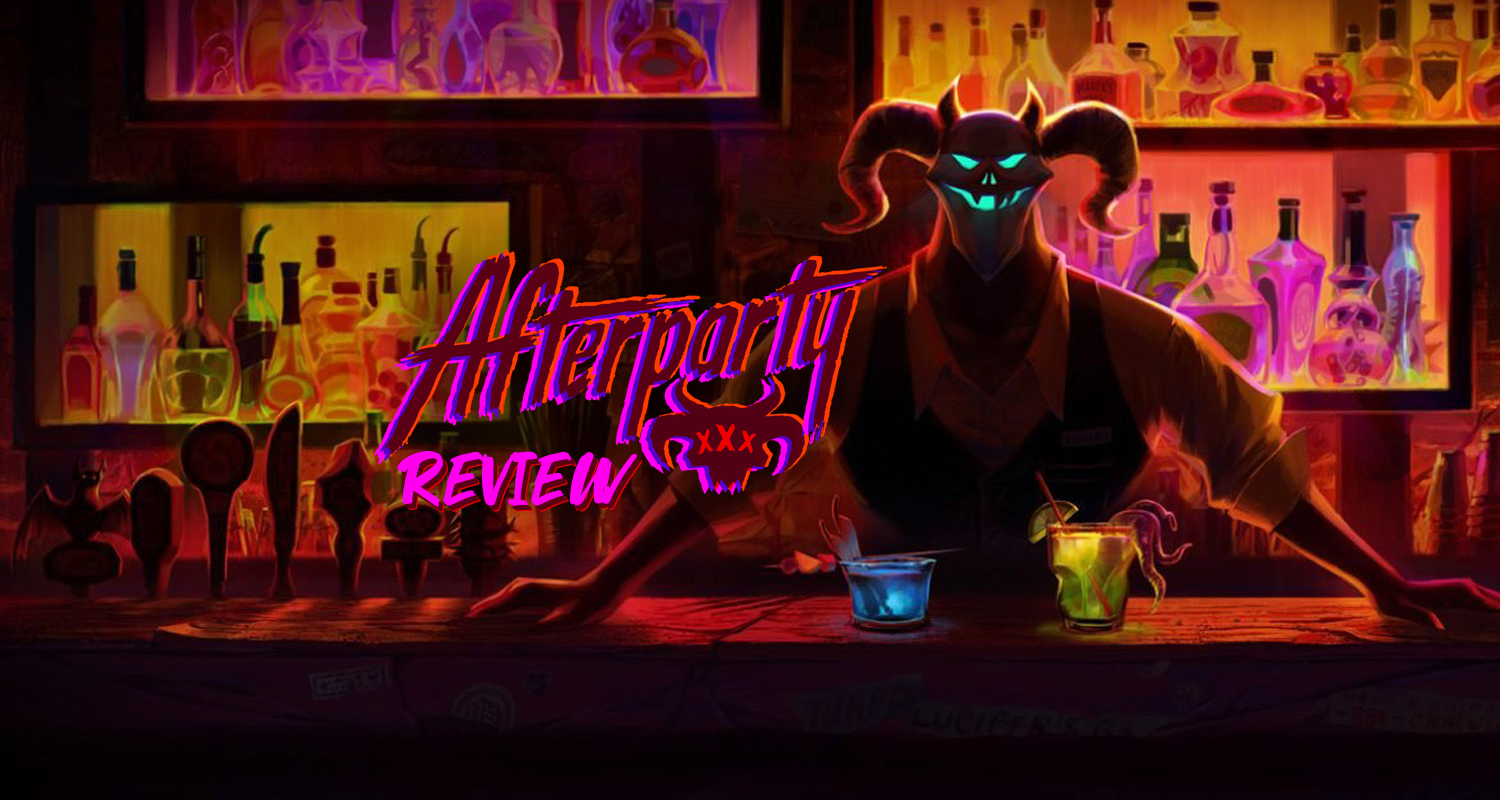Night School Studios came onto the gaming scene in a big way in 2016 with their debut game, Oxenfree. I enjoyed it quite a bit; it was a little Life is Strange with some X-Files thrown in, which is right up my alley. AND it was a game that featured multiple endings, which ended up kicking me right where it hurts the first time I played.
(Let’s just say I thought I was being nice to Alex, the blue haired protagonist of the game. Girl deserved some time off after the events of what happened on the island. Apparently, that was the WRONG decision. End rant.)
Night School’s credo is one that makes sense from a company founded by Telltale Games and Disney alumni: Create entertainment filled with wonder, danger, and humor.
Afterparty, their newest effort, checks all those boxes, and as you progress further in the game, gets surprisingly deep. You play as Milo, who is shy, studious, and adorably awkward, and Lola, assertive, sarcastic, and basically Kat Stratford from 10 Things I Hate About You. They’ve been BFF’s for AGES, and it’s the night before they’re set to graduate college. Cool, right?
Except for ONE THING. They’re dead and sentenced to a fiery afterlife in the depths of Hell.
Night School excels in their different take on Hell. Here, Hell is like everywhere else. People work their 9-5 jobs, and after, they head to the bar to unwind. Yes, there’s demons with horns and tails and the like, but they hate their jobs and such just like the rest of us, and that’s where the humor of Afterparty comes through; it’s relatable humor.
Hell is populated by a memorable cast of characters, the first that you meet being Sam. In the beginning, she’s just your Uber-ferry driver, but she becomes a close confidant and your guide to Hell as the game goes on. She’s the one who lets slip the loophole about leaving Hell, which sets the whole game in motion.
Your antagonists come in the way of Wormhorn, Lola and Milo’s “personal demon,” and Satan, the guy you have to drink under the table in order to leave hell. Wormhorn’s singular mission is to break the bond between Milo and Lola, and Satan, well, Satan’s goal is for everyone in Hell to have a good time and party hearty. To that end, he throws a rager every night at his mansion.
Much like Oxenfree, Afterparty is a choice driven, dialog-based game, so one playthrough can differ greatly from the next. I will say that I ended up playing more as Milo than Lola throughout the course of the game, and, interestingly, my goal of leaving Hell actually ended up changing for me part of the way through.
(As for how Afterparty plays? The only issues I had were when I was traveling on Sam’s taxi on the River Styx; I noticed the game had some odd stuttering issues on my Xbox One X.)
Afterparty isn’t just a game about dying and trying to escape hell. It gets much deeper than that, thanks to Wormhorn, even thought I moaned and groaned each time she popped up. If anything, her influence, her uber-bitchy influence at that, made me care for Milo and Lola’s friendship more.
And that’s what Afterparty is all about in the end; life (even the afterlife) and the friends you make along the way.

